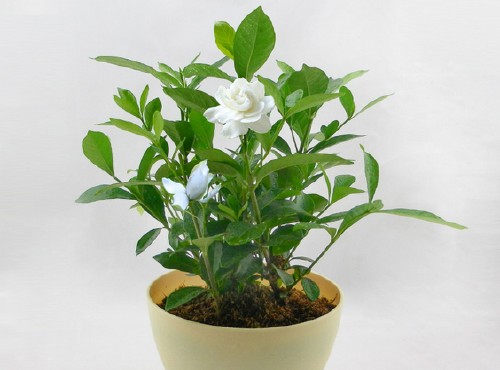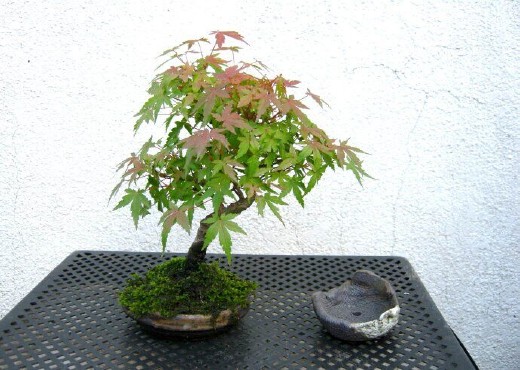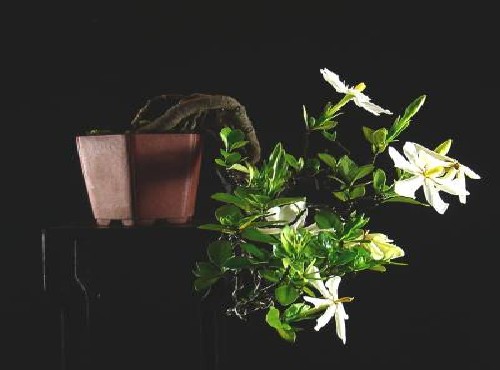Propagation method of Gardenia bonsai
The cultivation of gardenia bonsai is mainly based on cutting propagation, but also can be striped, split or sowed. Cuttings can be cut with 1-2-year-old strong branches in March-April, with 10-12 cm long, uniform nodes at the lower end, 1-2 pairs of leaves at the upper end, 23 depth, B permeable after cutting, and often maintain a certain humidity, and can take root in April-May. Cutting with tender wood in rainy season, cuttings 8-10 cm long, leaving 2 pairs of leaves in the upper part, using 0.0025-0.005% indole acetic acid or 2. 4D treatment of the incision can promote the formation of healing tissue and increase the survival rate by more than 90%. A shed is needed for shade after cutting.

In the south, a water insertion method is used to propagate, using the current year's twigs, which are 12-15 cm long, soaked in clear water up to 12, change the water once a day, and put it in the semi-shade. B can produce new roots in about 20 days. Striping propagation is carried out from March to April, usually using the branches of 3-year-old strong mother trees to be ditched and buried in the soil, which can take root in about 30 days, and then be planted separately in the following spring.
Gardenia is mainly propagated by cuttings, and it can also be propagated by pressing, dividing plants, and sowing.
1. Cuttage propagation
From May to June, select semi-lignified, fully developed twigs, cut them into 10 mures 15 cm long, soak the base with 1000 mg / kg naphthoic acid for 3 to 5 seconds, cut them in acid soil with strong water and fertility conservation, generally use 3 portions of rotten leaf soil or mountain mud, 1 part of sawdust, peat or river sand, take root about 1 month after planting, and transplant after 50 days.
The method of water insertion is often used in summer in the south, which is carried out from April to July. The cut cuttings, which are 15 centimeters long and with 2 or 3 leaves on the top, are inserted on the basket lid or perforated plastic board, and the lid or plastic plate is floated on the surface. The upper part of the insert can be exposed to the water. Put it in the semi-shade after insertion and keep the water temperature for 16-18 ℃. New roots can grow in 20 days. When the temperature is high, change the water frequently, change the water once a day, can not make the water deteriorate. When the root is 2-3 cm long, it can be transplanted.
2. Striping propagation
Most of them are carried out from May to June. Select 1-year-old, 2-year-old strong branches, 25 cm long, pressed into the soil 3 cm 5 cm, about 1 month can take root, 2 months later can be cut off from the mother. Can also be high pressure, that is, on the adult gardenia, choose 2-3-year-old strong branches ring peeling 1cm, and then wrapped in moist peat, the outside wrapped with plastic bags to keep the soil moist, about 40 days can grow new roots, 2-3 months later cut off the mother.
3. Ramet propagation
In May, there are 2 or 3 branches growing side by side at the base of the root, which can be cut from the root with a knife, and each ramet has fine roots. After the wound is coated with plant ash, it can be planted separately.
Time: 2019-06-12 Click:
- Prev

Pose technique of Acer maple bonsai
Small deciduous trees of the genus Acer of the family Acer with dark gray bark and thin branchlets; young branches turquoise and slender. Purple flowers, purplish red when Samara is tender, yellowish brown when ripe, wings spreading into obtuse angles. Nutlets globose, veined conspicuously; wings and nutlets open at an obtuse angle. Like light, warm and humid climate, cold resistance is not strong
- Next

How to water the bonsai of cultivated gardenia
Gardenia likes to be wet, if the air humidity is less than 70%, it will directly affect flower bud differentiation and bud growth, but too wet will cause root rot and branch withering, leaf yellow shedding phenomenon. In addition to normal watering, foliar and nearby ground should be sprayed with clean water frequently to increase air humidity appropriately. Gardenia, also known as Gardenia jasminoides
Related
- Fuxing push coffee new agricultural production and marketing class: lack of small-scale processing plants
- Jujube rice field leisure farm deep ploughing Yilan for five years to create a space for organic food and play
- Nongyu Farm-A trial of organic papaya for brave women with advanced technology
- Four points for attention in the prevention and control of diseases and insect pests of edible fungi
- How to add nutrient solution to Edible Fungi
- Is there any good way to control edible fungus mites?
- Open Inoculation Technology of Edible Fungi
- Is there any clever way to use fertilizer for edible fungus in winter?
- What agents are used to kill the pathogens of edible fungi in the mushroom shed?
- Rapid drying of Edible Fungi

